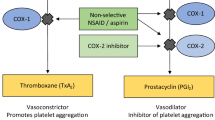Abstract
Meloxicam is a new preferential cyclo-oxygenase-2 inhibitor. This paper presents a global safety analysis of data from meloxicam clinical studies, focusing on gastrointestinal (GI) adverse events. Meloxicam 7.5 mg and 15 mg (n=893 and 3282) were compared with piroxicam 20 mg (n=906), diclofenac 100 mg slow release (n=324) and naproxen 750–1000 mg (n=243). With respect to all GI adverse events, meloxicam 7.5 mg and 15 mg were significantly superior to all comparators in a pooled analysis of double-blind studies in rheumatoid arthritis and osteoarthritis. When examining nonserious GI events, severe GI events, discontinuations due to GI events, dyspepsia, abdominal pain and upper GI events, both meloxicam doses were significantly superior to comparator NSAIDs in most cases. Where statistical significance was not demonstrated, there was generally a clear trend in favour of meloxicam. With respect to upper GI perforations, ulcerations and bleedings, the most serious of NSAID-associated side-effects, meloxicam was better tolerated than the comparators, reaching statistical significance for piroxicam and naproxen. Meloxicam’s improved GI safety profile is likely to be due to its preferential inhibition of inducible cyclo-oxygenase-2 relative to constitutive cyclooxygenase-1.
Similar content being viewed by others
References
Paulus HE. FDA Arthritis Advisory Committe Meeting. Serious gastrointestinal toxicity of nonsteroidal antiinflammatory drugs; drug-containing renal and biliary stones; diclofenac and carprofen approved. Arthritis Rheum. 1988;31:1450–51.
Coles LS, Fries JF, Kraines RG, Roth SH. From experiment to experience: side effects of nonsteroidal antiinflammatory drugs. Am J Med. 1983;74:820–8.
Lee P, Ahola SJ, Grennan D, Brooks P, Buchanan WW. Observations on drug prescribing rheumatoid arthritis. Br Med J. 1974;1:424–6.
Mills SB, Bloch M, Bruckner FE. Double-blind cross-over study of ketoprofen and ibuprofen in management of rheumatoid arthritis. Br Med J. 1973;4:82–4.
Larkai EN, Smith JL, Lidsky MD, Sessoms SL, Graham DY. Dyspepsia in NSAID users: the size of the problem. J Clin Gastroenterol. 1989;11(2):158–62.
Langman MJS. Epidemiologic evidence on the association between peptic ulceration and anti-inflammatory drug use. Gastroenterology. 1989;96:640–6.
Griffin MR, Piper JM, Daugherty JR, Snowden M, Ray WA. Nonsteroidal anti-inflammatory drug use and increased risk for peptic ulcer disease in elderly persons. Ann Intern Med. 1991;114:257–63.
Langman MJS, Weil J, Wainwright P et al. Risks of bleeding peptic ulcer associated with individual non-steroidal anti-inflammatory drugs. Lancet. 1994;343:1075–8.
Laporte JR, Carné X, Vidal X, Moreno V, Juan J. Upper gastrointestinal bleeding in relation to previous use of analgesics and non-steroidal anti-inflammatory drugs. Lancet. 1991;337:85–9.
Garcia-Rodriguez LA, Jick H. Risk of upper gastrointestinal bleeding and perforation associated with individual non-steroidal anti-inflammatory drugs. Lancet. 1994;343:769–72.
Griffin MR, Ray WA, Schaffner W. Nonsteroidal antiinflammatory drug use and death from peptic ulcer in elderly persons. Ann Intern Med. 1988;109:359–63.
Fries JF, Miller SR, Spitz PW, Williams CA, Hubert HB, Bloch DA. Identification of patients at risk for gastropathy associated with NSAID use. J Rheumatol. 1990;17(20):12–19.
Babriel SE, Jaakkimainen L, Bombardier C. Risk for serious gastrointestinal complications related to use of nonsteroidal antiinflammatory drugs. A meta-analysis. Ann Intern Med. 1991;115:787–96.
Vane JR. Inhibition of prostaglandin synthesis as a mechanism of action for aspirin-like drugs. Nature (New Biol). 1971;231:232–5.
Masferrer JL, Seibert K, Zweifel B, Needleman P. Endogenous glucocorticoids regulate an inducible cyclooxygenase enzyme. Proc Natl Acad Sci USA 1992;89:3917–21.
Vane JR. Towards a better aspirin. Nature. 1994;367:215–16.
Engelhardt G. Meloxicam a potent inhibitor of COX-2. Data presented at 9th international conference on prostaglandins and related compounds, Florence, Italy, 6–10 June 1994, p. 82.
Churchill L, Graham A, Farina P, Grob P. Inhibition of human cyclooxygenase-2 (COX-2) by meloxicam. Rheumatol Eur. 1995;24(suppl 3):272.
Pairet M, Engelhardt G, Lidbury P, Vane JR. Differential inhibition of cyclooxygenase-1 (COX-1) and cyclooxygenase-2 (COX-2) by meloxicam and its 4′ isomer. Br J Pharmacol. [in press].
Engelhardt G, Homma D, Schlegel K, Utzmann R, Schnitzler Chr. Anti-inflammatory, analgesic, antipyretic and related properties of meloxicam, a new non-steroidal anti-inflammatory agent with favourable gastrointestinal tolerance. Inflamm Res. [in press].
Cooperating Clinics Committee of the American Rheumatism Association. A seven-day variability trial of 499 patients with peripheral rheumatoid arthritis. Arthritis Rheum. 1965;8:302–34.
Arnett FC, Edworthy SM, Block DA et al. The American Rheumatism Association 1987 revised criteria for the classification of rheumatoid arthritis. Arthritis Rheum. 1988;31:315–24.
World Health Organisation. Adverse reaction terminology list. Uppsala: WHO: 1990.
Kalbfleisch JD, Prentice RL. The statistical analysis of future time data. Wiley: New York; 1980.
Giercksky KE, Huseby G, Rugstad HE. Epidemiology of NSAID-related gastrointestinal side effects. Scand J Gastroenterol. 1989;24(163):3–8.
Bateman N. NSAIDs: time to re-evaluate gut toxicity. Lancet. 1994;343:1051–2.
Mitchell JA, Akarasereenont P, Thiemerman Chr, Flower R, Vane JR. Selectivity of non-steroidal anti-inflammatory drugs as inhibitors of constitutive and inducible cyclooxygenase. Proc Natl Acad Sci USA. 1994;90:11693–7.
Meade EA, Smith WL, DeWitt DL. Differential inhibition of prostaglandin endoperoxide synthase (cyclooxygenase) isozymes by aspirin and other non-steroidal anti-inflammatory drugs. J Biol Chem. 1993;268:6610–14.
Author information
Authors and Affiliations
Rights and permissions
About this article
Cite this article
Sistel, M., Mueller, C. & Bluhmki, E. Global analysis of gastrointestinal safety of a new nsaid, meloxicam. Inflammopharmacology 4, 71–81 (1996). https://doi.org/10.1007/BF02735561
Received:
Accepted:
Issue Date:
DOI: https://doi.org/10.1007/BF02735561



